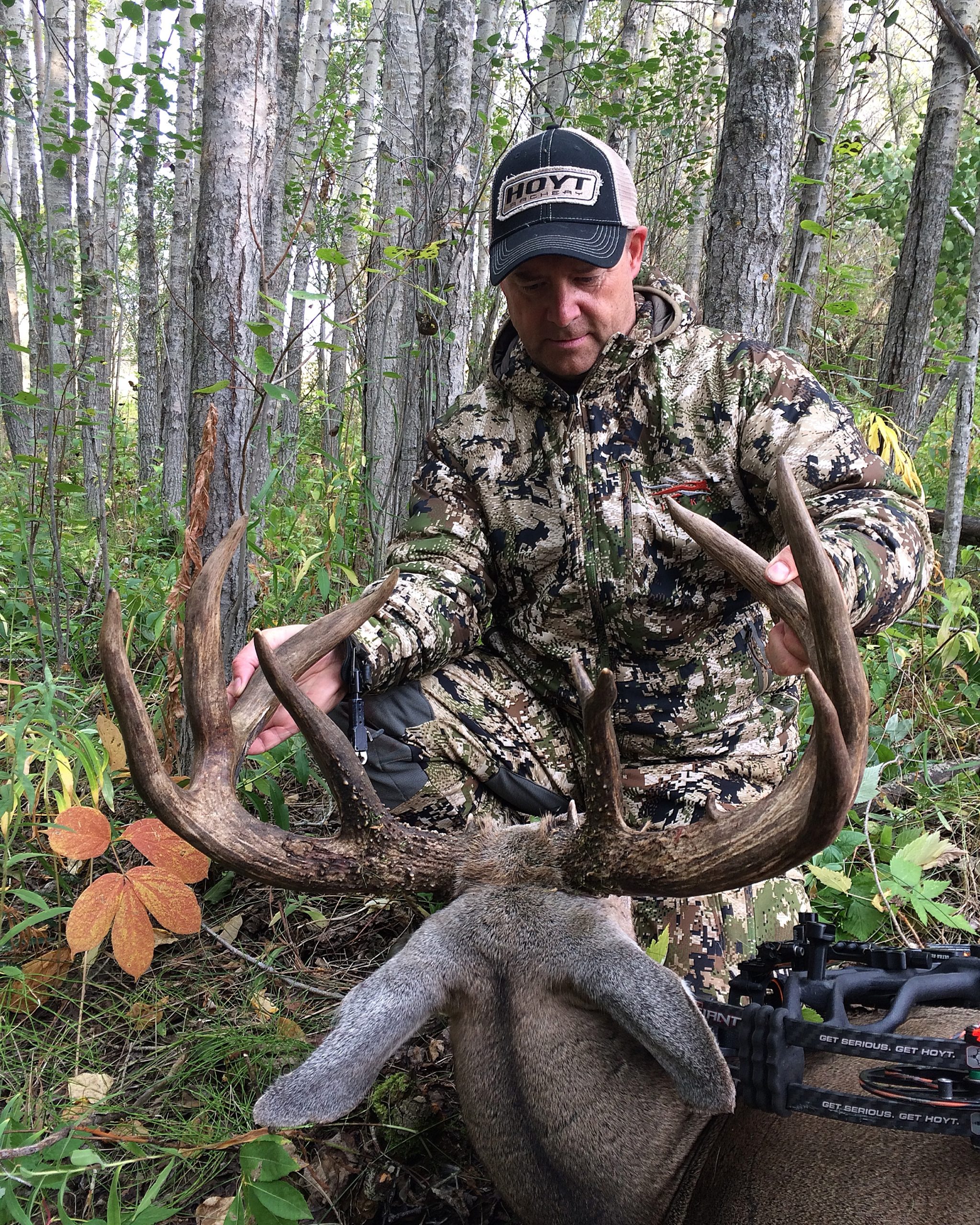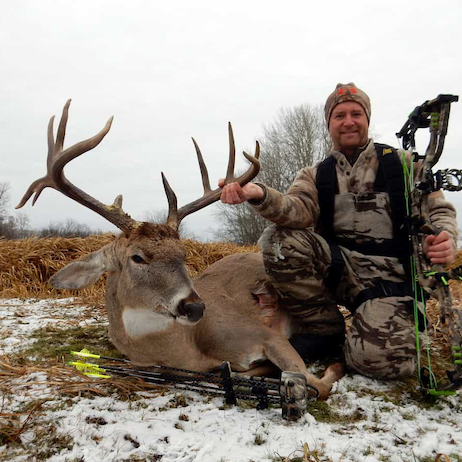It’s late summer and most of us are eager to place our early season stands. Indeed, where seasons are open, the earliest days are a great time to score with your bow. Here’s how to hone in on those prime stand locations.
Pinpointing Deer
Your first priority is to sort out the deer movement, and then determine where they are bedding, where and when they are traveling to feed, and then identifying specific areas where they are feeding the most.
Scour the woods for heavily used trails and fresh tracks. In most situations, focus on the most heavily used trails and trail intersections between bedding and feeding areas. With the lush foliage in the early season, field edges and staging areas can be great places to focus your attention. Trail cameras will be your biggest asset in identifying what deer are living in the area during the summer months, and often during the earliest days of the any August or September seasons. As you scout, place cameras where multiple trails converge and either exit, or enter, the woods. Savvy early season bowhunters look for these trails in locations where deer are forced by the terrain to funnel into a given spot. Placing stands 20-feet high, approximately 20-yards from these trail intersections or terrain pinch-points will almost always produce shot opportunities.
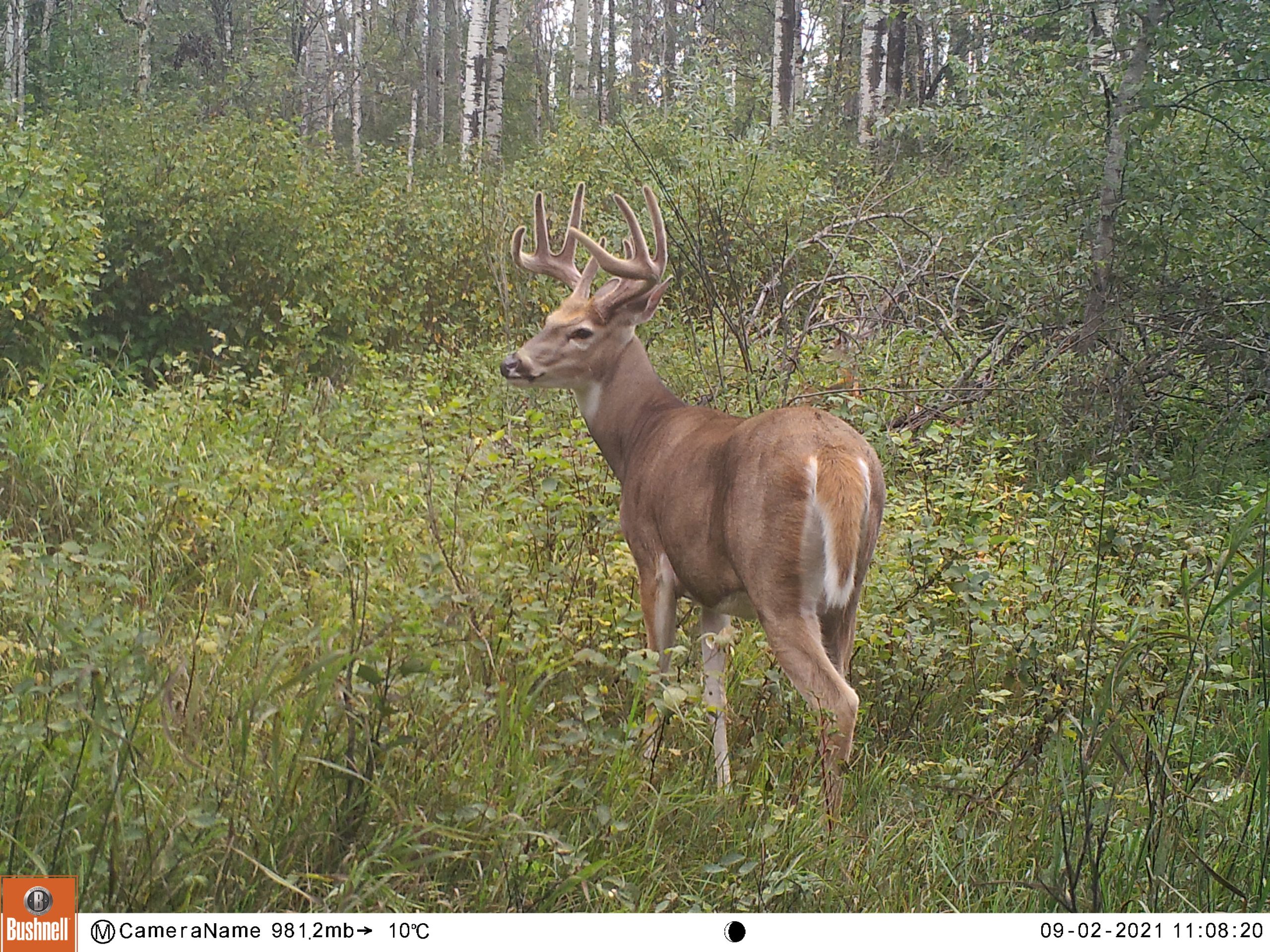
With few exceptions, the oldest and biggest bucks will almost always key in on the best protective cover and food sources. Left undisturbed, big bucks will hang out in close proximity to the most nutrient-rich food. In agricultural areas, this could be pea, alfalfa, corn, soybean, oat, canola fields. If you’ve planted nutrient-rich food plots, then you already have this part of the equation under control.
As long as crops are standing, deer are afforded concealment and they will commonly venture out into these crops earlier in the evening, feed all night, and sometimes even bed down in these fields during daylight hours – feeling protected by the cover they offer.
Water Holes & Mineral Licks
In August and even September, water is a big asset. When late summer temperatures are high, deer need more hydration. Dugouts, creeks, and smaller wetlands, can be heavily used – especially during hot spells. Well-travelled trails leading to dugouts, or crossing creeks are dynamite places to stand hunt during those hotter-than-average days of the early bow season.
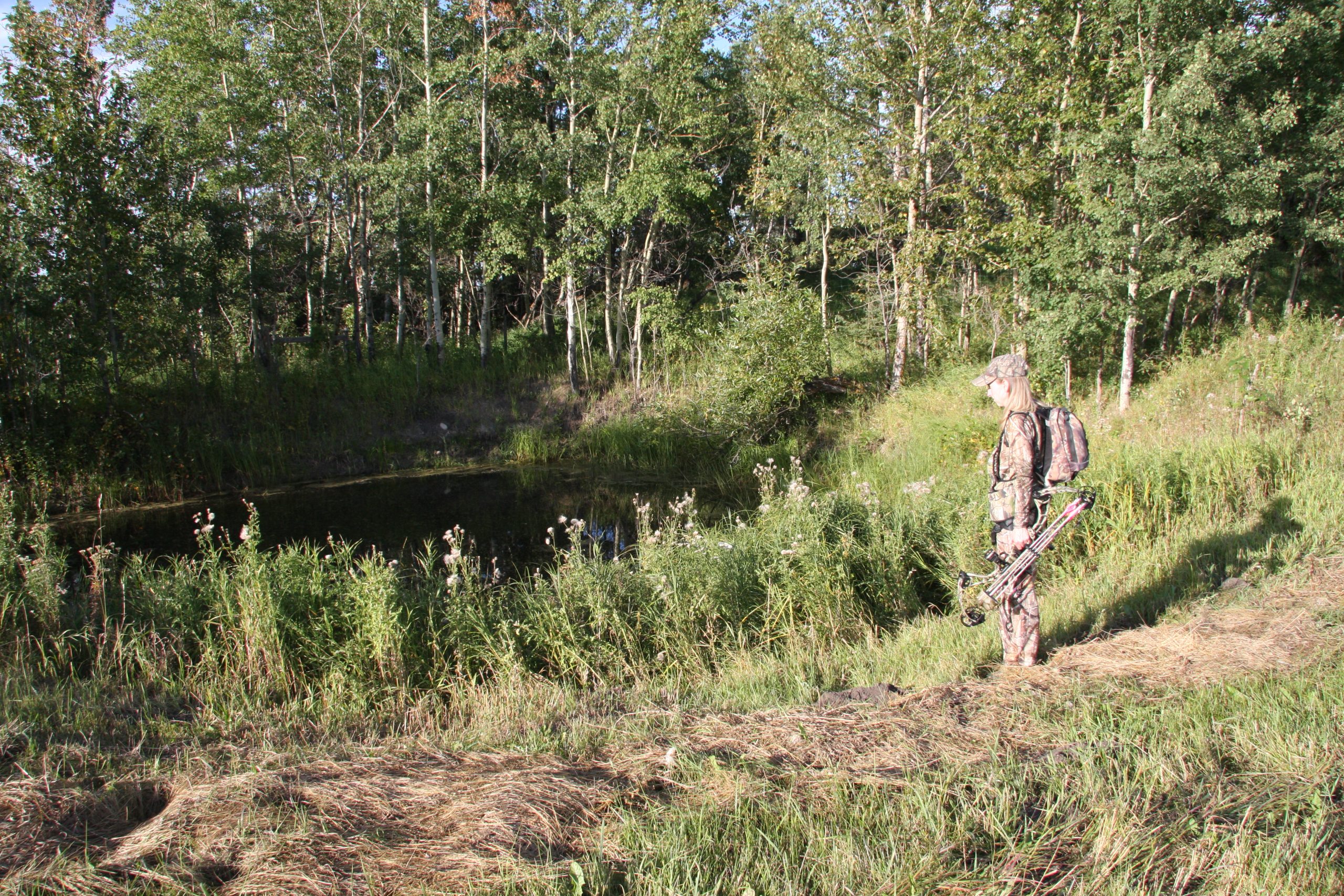
Patterning Early Deer
With the right combination of bedding cover and feed, whitetails in particular can – at least to some extent – be patterned in the early season, especially before bucks transition from velvet to hard-antler. As far as stand placement is concerned, deciphering their routine is the goal. Find a prime food source near good bedding cover and you’re sure to locate deer. Figure out where they’re bedding, which trails they’re using to move from bedding to feeding, set up a stand in a nearby tree for a shot opportunity, and your odds go way up. But remember, deer commonly shift within their home range every two-to-four days. They may only move a few hundred yards or so, but if you find movement is inconsistent, this could be why. If you prefer mobility, and the opportunity to switch stand locations on the fly, consider using one of the new tree saddles, like the Tethrd Phantom Saddle or the Tethrd Eberhart Signature Saddle.
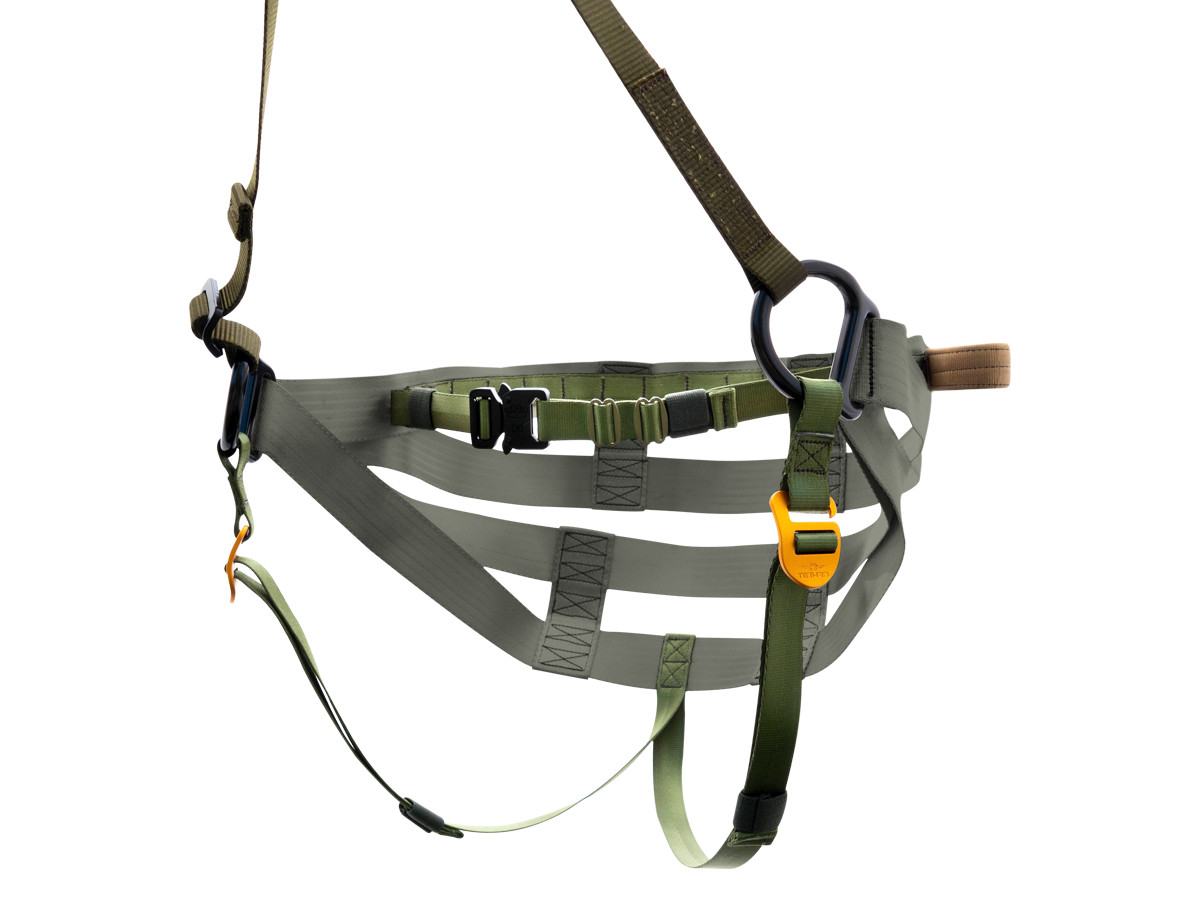
Early Stands for Big Mature Bucks
Remember, mature bucks rarely use the same trails and can be especially difficult to pattern. Find one that is doing the same thing over and over again, and it can be like winning a lottery. When the season opens, the key then, is slipping in well before the time you plan to hunt, minimizing the human scent you lay down, putting up your stand and then exiting undetected. As a rule, place your early stands at least two weeks before the opener. This leaves the ground undisturbed and gives the deer an opportunity to resettle.
Bowhunting on, or near, field edges can be especially productive for the first couple weeks of the season, but as soon as they lose their velvet and crops are knocked down, whitetails tend to become more nocturnal and visible movement slows down for at least a couple weeks in open areas.
Morning & Evening Stands
Certainly where deer bed, move, and feed, dictates where we place stands or blinds, but it also determines whether or not we can safely use these ambush locations relative to the wind or thermals at any given time. For this reason, and particularly when it comes to early season stand placement, it is imperative to identify different morning and evening locations. Periodically, stand or blind locations may be hunted in both the morning and evening, but extreme care should be taken to consider not only how you will get into the stand without detection but also your exit strategy. Nothing is worse than climbing into a stand, having deer feed all around you, but not being able to leave without spooking them.
On agricultural properties where I tend to do most of my early season bowhunting, prevailing winds are from the northwest. So, for morning stands, I tend to look for northern exposure field edges. This assures me that any deer approaching from the open feeding areas catch my scent from the windward side. For evening locations in agricultural areas, I tend to look for the opposite, i.e., south-facing field edges. With any recognizable breeze or wind, this keeps my scent from blowing into their bedding area as I approach, climb in, and hunt my evening stands.
For the most part, early season deer hunting involves sitting for a few hours in the morning and few hours in the evening. The only time I may consider sitting an early season stand or blind all day long might be on a regularly visited waterhole or mineral lick. Where baiting is allowed, sitting over bait is always an option, but if you find a natural mineral lick, these can by dynamite locations to set up a stand as deer and other ungulates will visit for a drink at any time throughout the day, particularly in big timber areas.
Shooting Lanes
I’m a purist when it comes to setting stands. In my mind, less is more. The more natural a stand looks, the better it will be. We’ve all seen stand or blind sites that have been cleared of every branch and leaf to give the bowhunter complete visibility. The problem is, deer know when their habitat has changed. When their surroundings are modified too much, they often avoid the area for a time. Remember, especially in the early season, they are accustomed to having as much cover as possible. In the end, its about balance. Clear just enough to give yourself shot options, but keep as much natural cover as possible. Ideal early stand locations offer natural leafy camouflage while providing several windows for a shot opportunity.
In the end, setting and hunting early season stand locations is about capitalizing on potentially minimal deer movement – mostly very early and late in the day – that exists as deer routinely travel to and from bedding, feeding, and water or as they visit natural mineral licks. It demands that we control the amount of human scent we lay down, consider the wind, and pay attention to thermals. Do your best to blend in with your surroundings and sit during prime morning and evening movement, and shot opportunities will follow.
